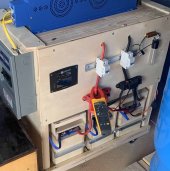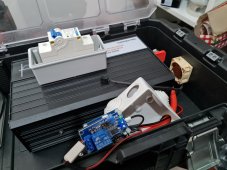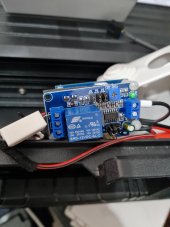Lionking45
New Member
- Joined
- Jan 18, 2022
- Messages
- 8
This reply is to the original post which was just an idea at the time. I did execute the plan and the idea worked. The BMS did not see a dead short and the inline resistor charged the capacitors. The visual of the light turning on (lamp in line with the resistor) and then off gave me the indication that the capacitors have been charged and I can switch on the circuit breaker. The process is as follows:
1) close the positive breaker while the negative breaker remains open
2) switch the pre-charge parallel circuit on (close the switch). The lamp turns on briefly - about a second and then dims.
3) close the negative breaker.
1) close the positive breaker while the negative breaker remains open
2) switch the pre-charge parallel circuit on (close the switch). The lamp turns on briefly - about a second and then dims.
3) close the negative breaker.









